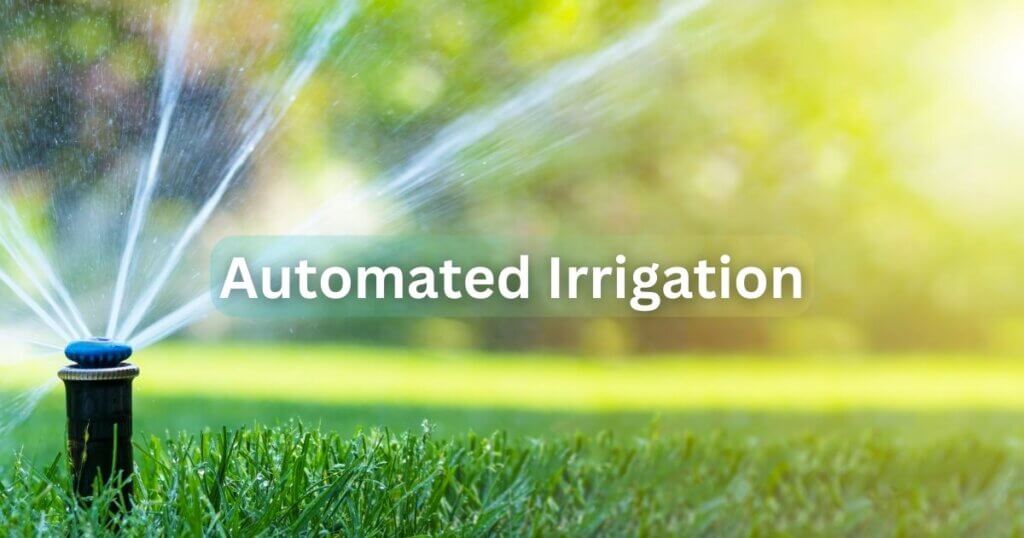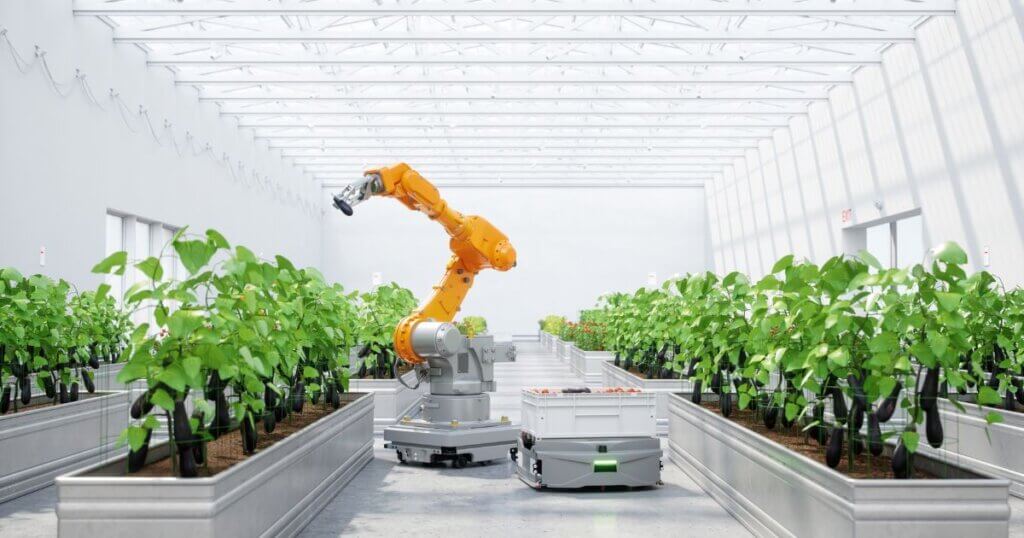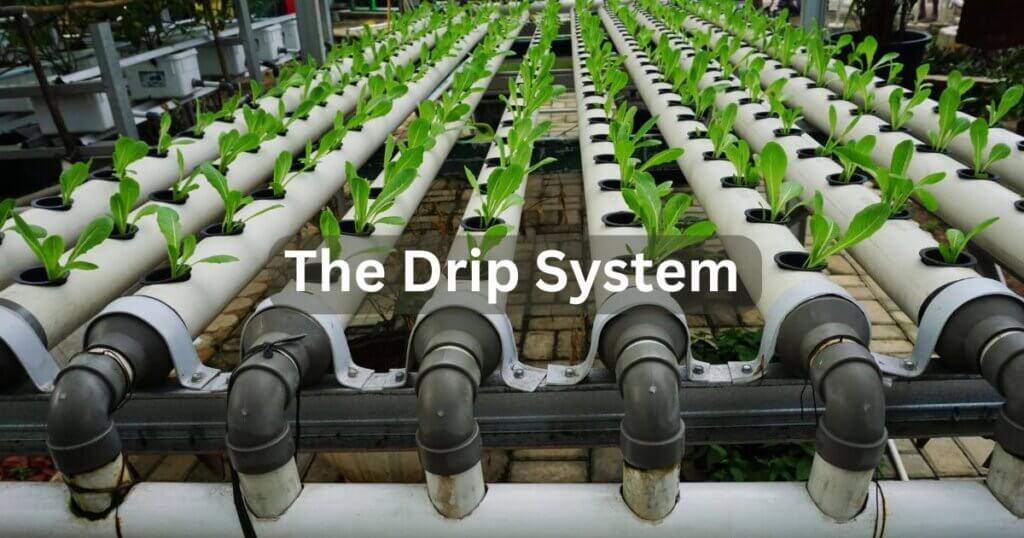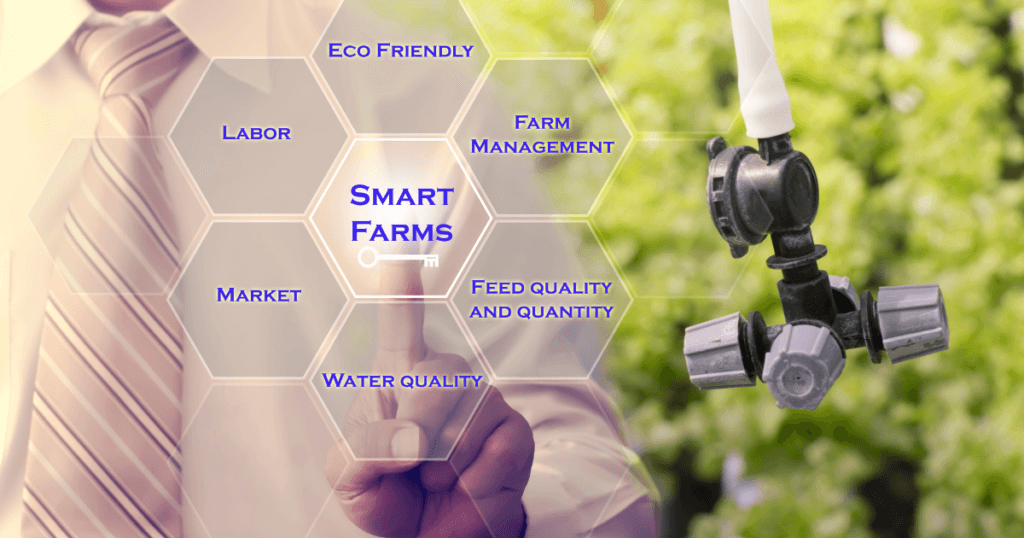Streamlining Indoor Farming with Climate Control Automation
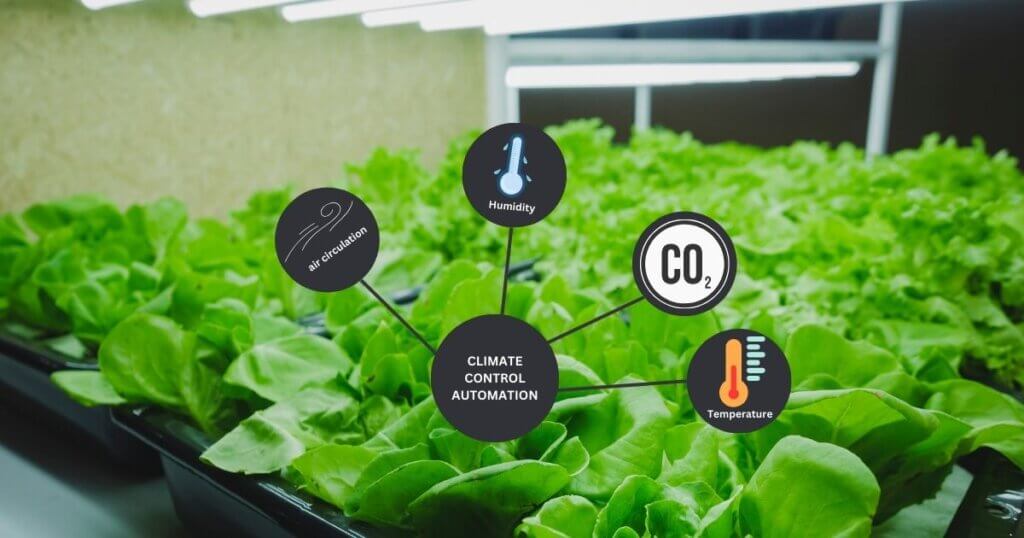
Some of the links in this post are affiliate links. As an Amazon Associate, we earn a referral fee from qualifying purchases—at no extra cost to you.
Revolutionizing Agriculture for Optimal Crop Growth and Efficiency
Table of Contents
Indoor farming has emerged as a game-changer in the agricultural industry, providing a controlled environment for cultivating crops regardless of external factors. However, ensuring optimal conditions for crop growth can be a challenging task. That’s where climate control automation comes into play. By leveraging advanced technologies and sophisticated systems, farmers can streamline indoor farming processes, optimize resource utilization, and maximize yields. This article will explore the significance of climate control automation in indoor farming and its transformative impact on agricultural practices.
Understanding Climate Control Automation
Climate control automation implements intelligent systems and technologies to regulate and maintain environmental parameters within an indoor farming facility. These parameters typically include temperature, humidity, lighting, ventilation, and CO2 levels. By automating the monitoring and adjustment of these factors, farmers can create an ideal environment that fosters healthy plant growth throughout different stages of cultivation.
The Role of Temperature Control
Temperature is pivotal in indoor farming, directly influencing plant metabolism, growth rates, and overall crop quality. Climate control automation systems enable farmers to maintain precise temperature ranges suitable for various plant species. By employing sensors, thermostats, and climate control software, these systems ensure a stable and consistent temperature within the growing area, regardless of external weather conditions.
Inkbird ITC-308 Digital Temperature Controller – This plug-and-play temperature controller helps manage heating and cooling equipment with precision. It’s ideal for grow tents or indoor greenhouses where temperature automation is key.
Optimizing Humidity Levels
Humidity control is another crucial aspect of climate control automation in indoor farming. Different crops thrive in specific humidity ranges, and maintaining optimal levels is essential for preventing diseases and mold growth and promoting efficient nutrient absorption. Automated climate control systems utilize sensors and humidifiers to regulate and stabilize humidity levels, providing an ideal environment for plant growth.
LEVOIT Humidifier for Large Rooms (6L) – A powerful ultrasonic humidifier with smart humidity settings and essential oil diffusion. Works well for maintaining optimal humidity in controlled grow environments.
Harnessing Efficient Lighting
Lighting plays a vital role in photosynthesis and influences the growth and development of plants. With climate control automation, indoor farmers can optimize lighting conditions to mimic natural sunlight or tailor them to the specific requirements of different crops. By utilizing energy-efficient LED lights and automated scheduling, farmers can ensure that plants receive the ideal amount and quality of light throughout their growth cycle.
Spider Farmer SF-2000 LED Grow Light – A full-spectrum LED grow light that supports all growth stages. It features dimming and daisy-chain functionality for large setups.
Ventilation for Fresh Air Exchange
Proper air circulation is critical in indoor farming to prevent the buildup of harmful gases, control humidity, and regulate temperature. Climate control automation systems incorporate ventilation mechanisms such as fans, louvers, and exhaust systems to exchange fresh air continuously. By maintaining optimal airflow, these systems create a healthy environment for plants and mitigate the risk of diseases and pests.
AC Infinity CLOUDLINE T6 Inline Duct Fan with Smart Controller – A quiet, high-performance ventilation fan that comes with a temperature and humidity-based controller for automation.
Managing CO2 Levels
Carbon dioxide (CO2) is a vital component of photosynthesis, and optimizing its levels can significantly enhance plant growth and productivity. Climate control automation systems actively monitor and regulate CO2 concentrations within indoor farming facilities, supplementing them when necessary. By maintaining an optimal CO2 balance, farmers can maximize photosynthetic efficiency and achieve higher yields.
Inkbird CO2 Controller and Monitor (INKBIRD IHC-200) – A reliable CO2 monitor and controller with dual relay outputs for managing CO2 levels through generators or regulators.
Benefits of Climate Control Automation in Indoor Farming
Implementing climate control automation in indoor farming offers many benefits, revolutionizing traditional agricultural practices and maximizing crop yields. Let’s delve into the advantages that farmers can leverage by embracing this transformative technology.
Enhanced Crop Growth and Yield
Climate control automation empowers farmers to create the perfect environment for each crop, unlocking their full growth potential. By precisely regulating temperature, humidity, lighting, ventilation, and CO2 levels, farmers can provide optimal conditions for plants to thrive. This results in accelerated growth rates, improved crop quality, and higher yields than conventional farming methods.
Reduced Resource Consumption
Traditional farming often involves substantial resource consumption, including water, energy, and fertilizers. Climate control automation allows farmers to optimize resource utilization by delivering them precisely when and where needed. By tailoring irrigation schedules, controlling lighting patterns, and managing ventilation, indoor farmers can reduce water wastage, minimize energy consumption, and optimize nutrient delivery, promoting sustainable and cost-effective practices.
Year-Round Cultivation
One of the significant advantages of indoor farming is the ability to cultivate crops year-round, regardless of external climate conditions. Climate control automation is crucial in mitigating the impact of changing seasons and adverse weather. By maintaining stable and controlled environments, farmers can continue cultivation throughout the year, ensuring a consistent supply of fresh produce for consumers.
Disease and Pest Management
Indoor farming facilities are relatively protected from external pests and diseases. However, proper climate control further fortifies this defense. By optimizing temperature, humidity, and ventilation, climate control automation creates an unfavorable environment for pests and diseases to thrive. This reduces the need for harmful pesticides and insecticides, promoting sustainable and eco-friendly farming practices.
Efficient Space Utilization
Indoor farming often utilizes vertical growing systems and hydroponics to maximize space utilization. Climate control automation enables farmers to optimize the arrangement and placement of crops, ensuring they receive uniform environmental conditions. By eliminating the need for excessive space and optimizing cultivation areas, indoor farmers can significantly increase crop production within limited square footage.
Challenges in Implementing Climate Control Automation
Implementing climate control automation can be challenging, especially for farmers who are new to this technology. These challenges include:
- High Initial Costs: While climate control automation systems offer long-term savings, the upfront investment for the equipment, installation, and training can be substantial. Smaller farming operations or those with limited capital may find it difficult to justify the expense.
- System Complexity: Some climate control automation systems may be complex, requiring technical expertise to install and maintain. Farmers may need to learn how to operate and troubleshoot these systems, which could lead to delays in production if not managed properly.
- Maintenance and Repairs: Automated systems are highly dependent on sensors, wiring, and software that require ongoing maintenance. In case of a malfunction, farmers may face costly repairs or system downtimes, which could negatively affect crop health and yield.
- Learning Curve: Traditional farming methods are often simpler to manage, and transitioning to automated systems may require a steep learning curve for farm staff. Some farmers might be hesitant to adopt these new technologies due to unfamiliarity or fear of losing control over operations.
Govee WiFi Hygrometer Thermometer Monitor Kit – A smart environmental monitoring system with app connectivity and real-time alerts. Ideal for growers just starting with automation.
The Future of Climate Control Automation in Indoor Farming
Climate control automation is poised to play an increasingly significant role in the future of agriculture. We can expect more sophisticated systems and innovative approaches to optimize crop growth and resource efficiency as technology advances. From AI-powered climate control algorithms to data-driven decision-making, the possibilities are vast. Integrating robotics and IoT devices may also enhance automation capabilities, enabling real-time monitoring and control of environmental parameters.
Conclusion
Climate control automation has revolutionized indoor farming, making it a highly efficient and sustainable method for crop cultivation. By precisely regulating temperature, humidity, lighting, ventilation, and CO2 levels, farmers can create an ideal environment that promotes optimal plant growth. The numerous benefits include increased crop yields, reduced resource consumption, year-round cultivation, improved disease and pest management, and efficient space utilization. As technology continues to evolve, climate control automation will undoubtedly shape the future of agriculture, ensuring food security and sustainability.
FAQs – Climate Control Automation
1. How does climate control automation impact energy efficiency in indoor farming?
While automation improves crop yields, it also requires energy for sensors, lighting, and HVAC systems. However, smart automation can optimize energy use by adjusting conditions in real time, reducing overall power consumption compared to manual systems.
2. What types of crops benefit the most from climate control automation?
While most crops can thrive in an automated indoor environment, high-value crops like leafy greens, tomatoes, strawberries, and herbs benefit the most due to their sensitivity to temperature, humidity, and CO2 levels.
3. Can climate control automation be integrated with hydroponic or aeroponic systems?
Yes, automation systems can be seamlessly integrated with hydroponic and aeroponic setups to regulate nutrient delivery, pH levels, and moisture content, further enhancing plant growth and efficiency.
4. What are the cybersecurity risks associated with automated climate control systems?
Since many climate control systems rely on IoT connectivity and cloud-based management, they can be vulnerable to cyber threats. Proper security measures, such as encrypted data transmission and access controls, are essential to prevent disruptions.
5. How do small-scale or home-based indoor farms afford climate control automation?
While large commercial farms use sophisticated automation, smaller farms can start with cost-effective solutions like smart thermostats, LED grow lights with timers, and Wi-Fi-enabled sensors that provide basic climate control without a massive investment.
Other Useful Resources Related To Climate Control Automation
- Priva BV:
Priva is a Dutch high-tech company specializing in climate control and automation for indoor farming. They offer services, equipment, and software for climate and process control in horticulture and buildings, aiming to optimize resource use and enhance crop yields. Priva Official Website - Controlled-Environment Agriculture (CEA):
This Wikipedia article provides an overview of CEA, which includes indoor farming systems with automated climate control. It discusses various techniques like hydroponics, aeroponics, and aquaponics, highlighting how these systems allow year-round crop production with optimized environmental conditions. Controlled-Environment Agriculture – Wikipedia - Open Agriculture Initiative:
The Open Agriculture Initiative developed the “Food Computer,” a controlled-environment agriculture platform that uses climate control automation to grow crops indoors. The system employs sensors to monitor and adjust environmental conditions, aiming to enhance food production and quality. Open Agriculture Initiative – Wikipedia - Electro-Agriculture:
Electro-agriculture is an innovative farming technology that allows crops to be grown without sunlight, soil, or large amounts of land. It uses solar-powered chemical reactions to convert carbon dioxide into organic molecules that plants can utilize, enhancing photosynthesis in complete darkness. Electro-Agriculture – Food & Wine Magazine - Indoor Saffron Cultivation in Kashmir:
Facing challenges due to climate change, saffron growers in Kashmir are experimenting with indoor farming methods. Researchers have developed a project using tubes with moisture and essential nutrients, showing promising results in temperature resistance and reducing crop failure. Indoor Farming in Kashmir – Reuters






